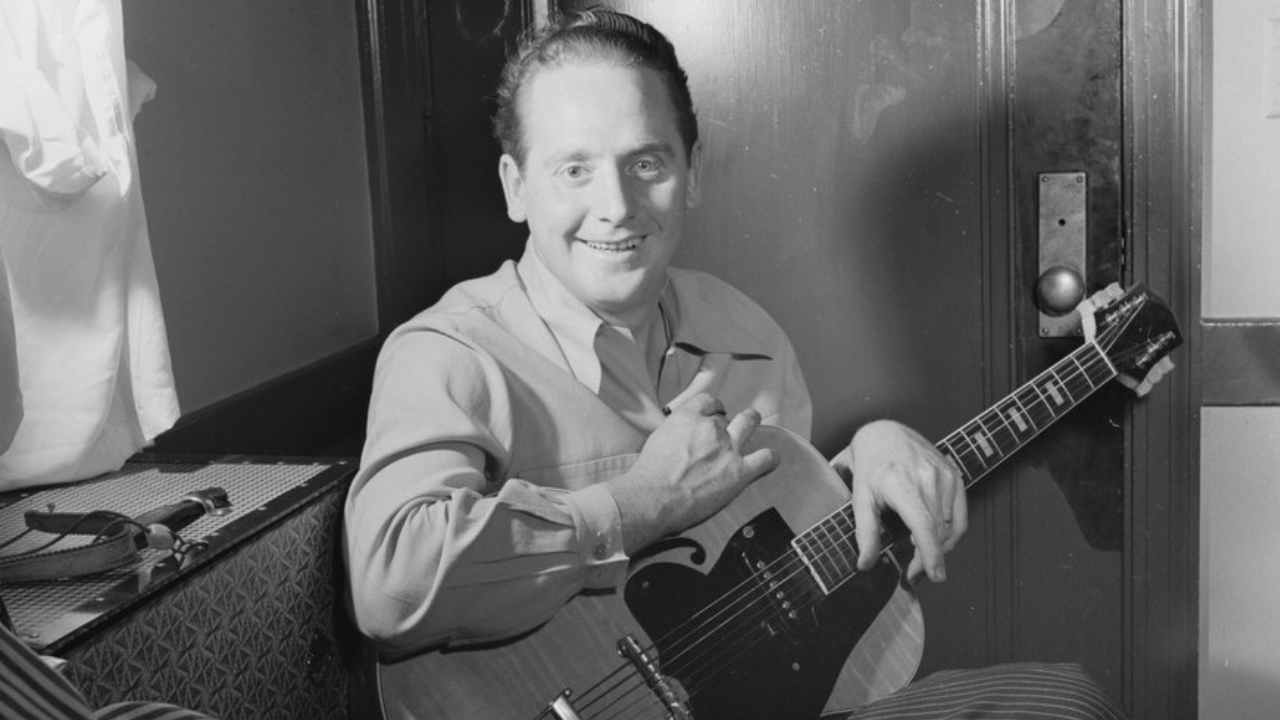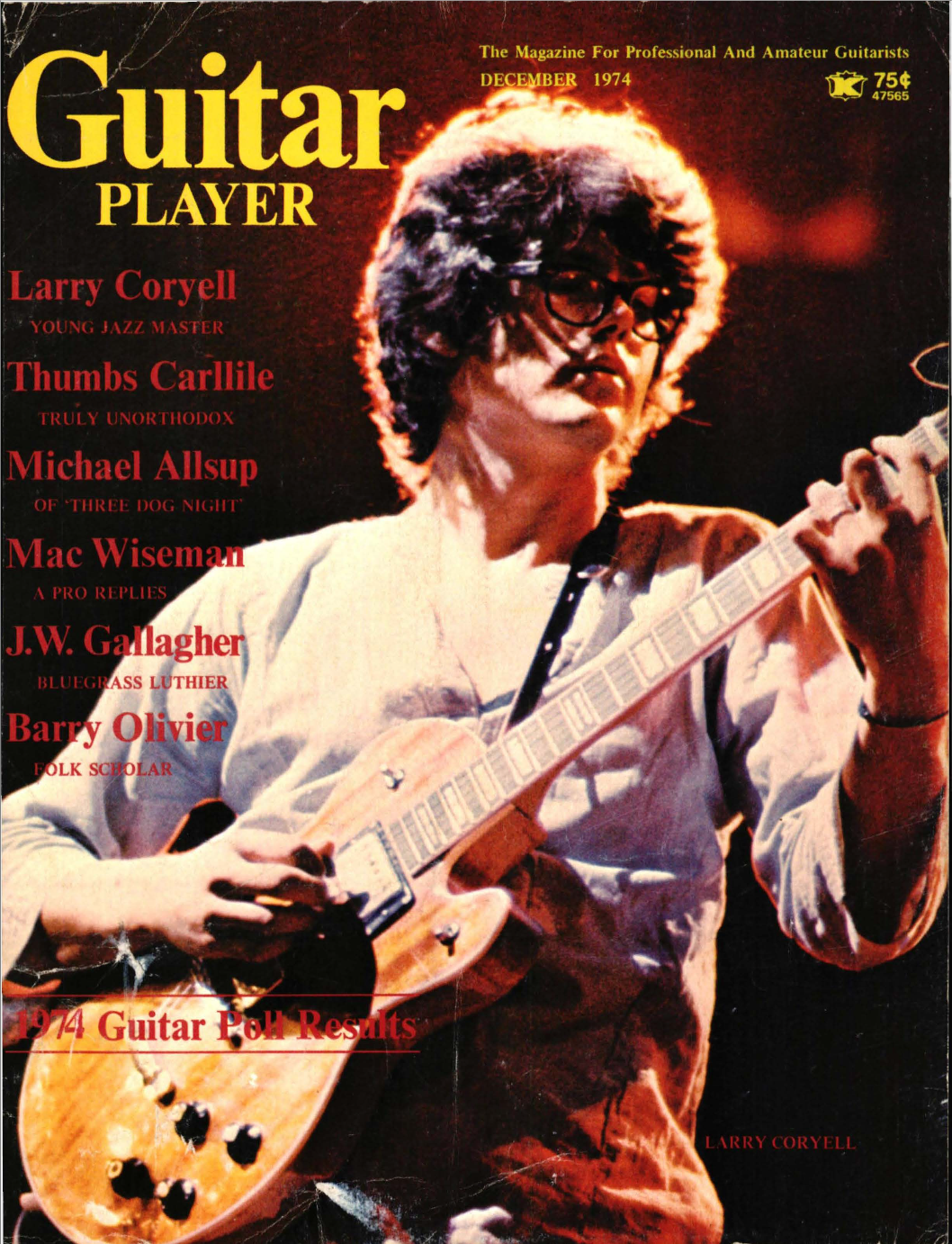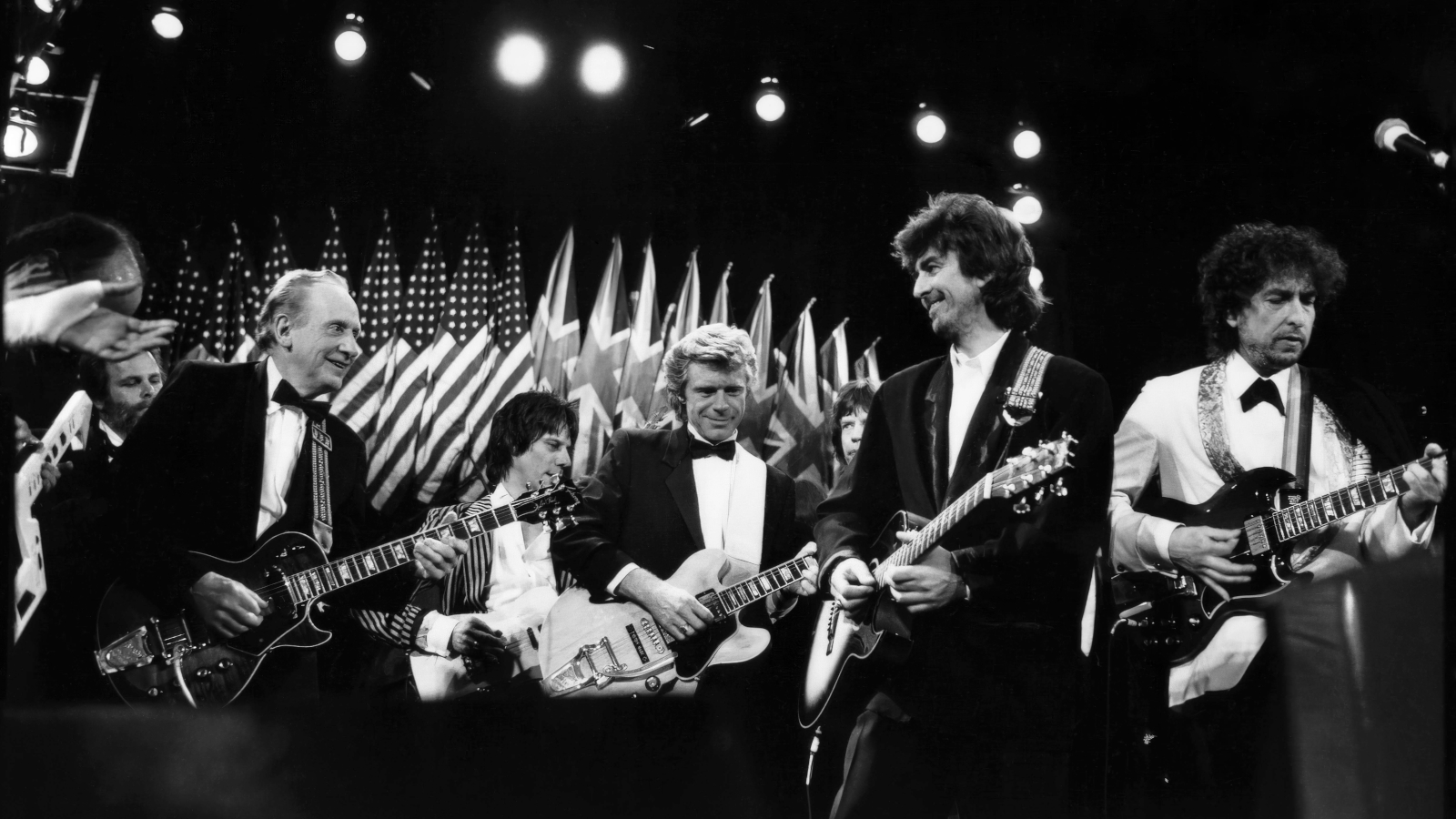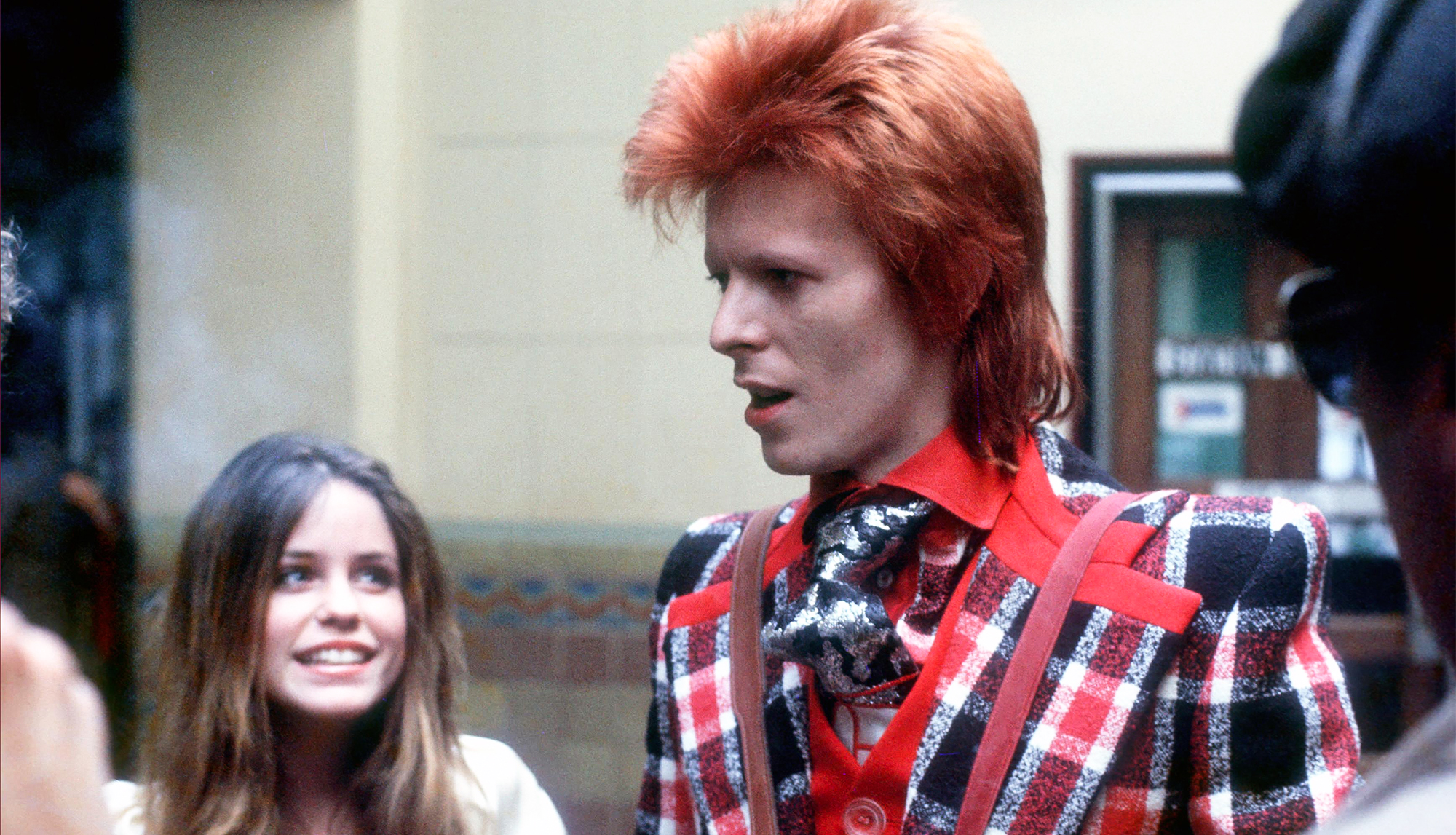"Try. Listen. Be patient. Don't worry about playing fast…" Back in 1974, Les Paul offered seven timeless bits of advice for guitarists

Les Paul, born in 1916, rose to national fame in the 1940s when he played pop and jazz guitar, and pioneered sophisticated engineering techniques in the recording industry. In 1949, Les married his partner, Mary Ford, and their duo was phenomenally successful throughout the next decade. He became a member of member of Guitar Players Advisory Board in 1969. At the time of the contributing the below article for the December 1974 issue of Guitar Player, he was working on an instructional book for Guitar Player Productions.
One way of learning to play music is for your parents to buy you an instrument, find you a teacher, and tell you, "Learn." You go take a lesson, the teacher assigns homework, and mom or dad sees to it that you put in your hour every day, without paying any particular attention to what you're practicing.
If you're not really interested in the instrument, you put in your time, go back to the teacher unprepared, the teacher tells you to practice your lesson for another week, takes the money, and figures "What the hell!"
I'm not putting all teachers into this category – there are many competent people who are teaching for reasons other than making a fast buck.
But another way of learning to play is to want to. Find a good teacher, and, as a starter, here are a few things to remember:
Master the basics
To try is very important.
Listen to your teacher; respect him or her along with the super-players. The pro's – they became super-players only after many years of hard work.
All the latest guitar news, interviews, lessons, reviews, deals and more, direct to your inbox!
Be patient, and learn one thing at a time.
Don't worry about playing fast – this comes with practice. Start very slow, and gradually increase the tempo to as fast as you can play, remembering to keep everything clean and even.
I repeat: clean and even. There are many ways of fingering and picking – this is where a teacher who is experienced can lead the student down the correct road. The way you practice your fingering and picking is crucial at the beginning – so many players find themselves trapped at a dead-end later on because of the way they practiced in the initial stages of learning.
Develop a feel
What I do is hand the student a guitar – in tune – and let them familiarize themselves with the sound. Then I lower a string several tones and ask them to tune it as they originally heard it. It's important for a teacher to know how good an ear the student has been blessed with, and to notice their sense of rhythm, reflexes and coordination, and their attitude.
Hear yourself as an audience will hear you. Make every note count – say something
Just to want to play is not enough – a serious student must also have all the things just mentioned. The teacher must remember that the student is new to the game. We old-timers have been around for a long spell and have not only watched and studied with others, but have discovered the pitfalls involved and know what lies ahead.
Choosing and using gear
At the beginning, I prefer an acoustic box with a decent, playable action and a medium pick. I start the student with all downstrokes until he gets the basics. I point out the dos and don'ts gradually. Don't move too fast. I like to mention to the student that he can't write a letter until he learns the ABC's.
After advancing to the electric guitar, play with the amplifier facing you – you can really fool yourself into thinking you're playing clean when you're not listening to a speaker pointed directly at you.
You should hear yourself as an audience will hear you, and believe me, clean playing counts. Long, fast runs aren't going to impress anyone if the only reason you're playing them is to play a long, fast run.
Make every note count – say something.
Remember: All guitarists are unique
I've taught quite a few people in my lifetime, and I sure learned to teach the player what not to do. I really hand-tailored them, realizing that each student is different. It's very difficult, but the teacher must adjust to each student.
If student and teacher click, this means the teacher really knows where it's at: teaching the basic rudiments, slow and clean; keeping the student's hopes high; and exposing him or her to the best musicians.
Watch the very best, in person. Learn something from everyone
If possible, I take the student to watch the very best, in person, and also get tapes or records of these people. And you can bet that these players we go to see did the same thing – listened to those they admired, and learned something from everyone.
Sometimes a student will say he would like to play like "so-and-so," who may not be the best musician in the band, but the student unconsciously chooses them because they seem within the student's reach as a goal.
Also, once in a while, a student figures they've got it all after only half a dozen lessons.
Patience reaps reward
Another serious problem is when the teacher assigns a certain piece of music with proper fingering and picking, and the student practices incorrectly for a week, in spite of a God-given rhythm and a good ear.
This is where patience on the teacher's part is important – he must realize that it takes many hours of practice to play well, and he must also make certain that they get that message across to the student.

A student and I were listening to a fine musician and the student said, "Let's go. I can't learn anything from him." Maybe he couldn't, but I did. I learned a mess of things – some, what to do and some, what not to do.
The student's antenna must be kept and raised – what good is a receiver without an antenna?
I was very fortunate to teach students who all had excellent ears, a good sense of rhythm, and the desire and will to learn the methods I suggested. I also got great satisfaction from teaching my sons to play. I'm proud to say that they're not only good musicians, but also excellent audio engineers, and they are winning awards for the sound they are achieving on phonograph records.
Keep it clean and persevere
To sum it up, I again stress clean playing and patience.
Some people learn faster than others, so don't try to exceed your capabilities. Play what you can play easily, and the speed and technique will come by itself.
A really serious player won't have to be told to practice. They've got to realize that it's the only road toward perfection. And don't strive for absolute perfection – it's not to be had.
Never stop listening to other players. If at first you base your playing on someone else, there's nothing wrong with that; but don't stay there. Don't be a carbon copy
You will find that the more deeply involved you get with the instrument, the more things you will find that you want to learn – I don't think you can ever stop learning.
Don't stay on one road – there are many exciting things happening in other branches of music than the particular type you may start with.
Reading is very important if you want to become a versatile player, and it will open many new roads to you. Also, the more successful you become, the less time you will have for practicing, but you can learn from what's going on around you.

Never stop listening to other players, and if, at the beginning, you base your playing on someone else's style, there's nothing wrong with that – but don't stay there. Don't be a carbon copy. Try to extract the better things and incorporate them into your own style, always learning, always adding to your versatility.
In closing, I raise my beer in a toast : "Good luck, and many happy years of playing."
This feature originally appeared in the December 1974 issue of Guitar Player magazine.
"He's our Frank Sinatra," wrote Guitar Player in 2005, "but with all the transcendent talent and none of the cheesy Rat Pack antics. He's our Leonardo DiVinci, Babe Ruth, Lawrence Olivier, and Inspector Gadget all rolled up into one mortal coil, chock-full of mischief and wisdom. The fact that he plays damn brilliant guitar, invented multitrack recording, developed the modern solidbody electric, and lends his name to one of the all-time great guitar models is almost too much to bear, because God put him here in our lifetime, and we probably don't deserve such good fortune.
"Les Paul. Even his name is magical."
Les was a member of the Guitar Player Advisory Board, alongside Chet Atkins, Glen Campbell, BB King, Jerry Garcia and many more, and contributed occasional words of wisdom.
